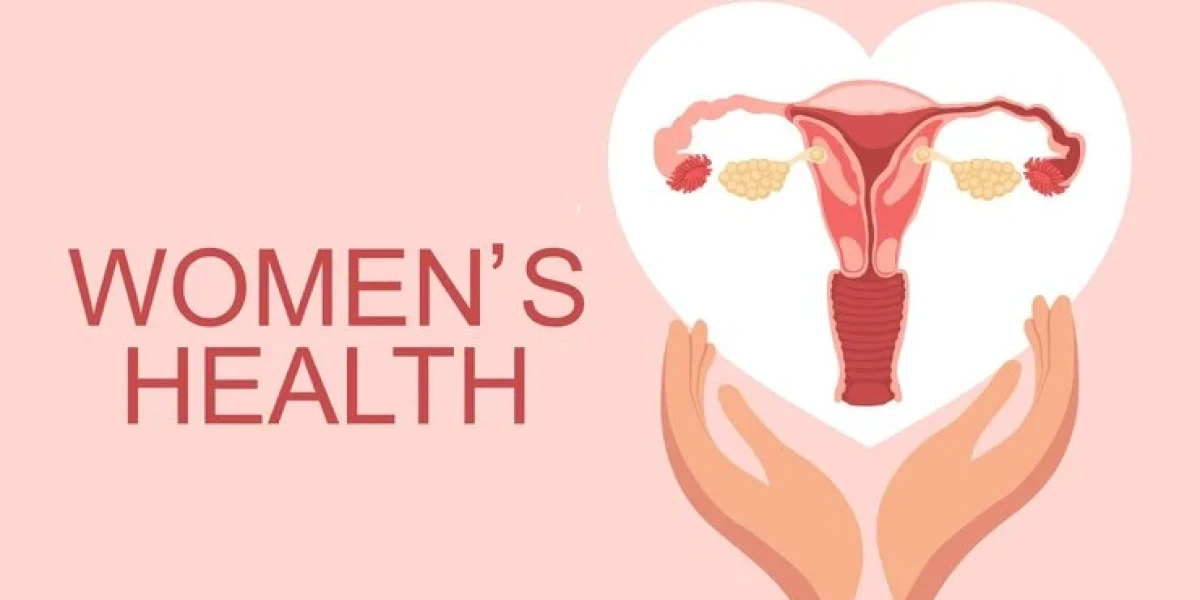Introduction
Bacterial Vaginosis (BV) is a common yet often misunderstood condition that affects the vaginal health of many women worldwide. It takes place when the normal bacterial balance in the vagina is thrown off, resulting in an overgrowth of harmful bacteria. BV is not classified as a sexually transmitted infection (STI), but it can increase the risk of acquiring STIs if left untreated. Women of reproductive age are most at risk, though it can affect women at any stage of life. Recognizing the signs of BV and understanding its causes is crucial for maintaining optimal reproductive and sexual health. In this post, we’ll dive deep into the symptoms of BV, how it manifests, and why early detection is vital.
Recognizing the Signs and Symptoms of Bacterial Vaginosis
The most common indicator of BV is an unusual vaginal discharge. Unlike the usual clear or white discharge, BV often shows up with a grayish-white discharge that might be thin and watery. The presence of an abnormal discharge is typically one of the first symptoms women notice, which can prompt them to seek medical advice.
Another key symptom of bacterial vaginosis is a noticeable, unpleasant "fishy" odor. This odor is usually more prominent after sexual intercourse due to a chemical reaction between semen and vaginal fluids. Women experiencing BV often report feeling self-conscious about this smell, particularly during intimate moments. The odor can vary in intensity but is often strong enough to cause discomfort or embarrassment.

Along with discharge and odor, itching or irritation in the vaginal area can also occur. While itching isn't always a hallmark of BV, it may accompany other symptoms, making the vaginal area feel uncomfortable or inflamed. This itching can also extend to the external genital area, exacerbating the discomfort women feel during daily activities or while wearing tight clothing.
Some women with BV also experience a burning sensation during urination. This symptom can be confused with a urinary tract infection (UTI), but the burning caused by BV is more localized to the vagina than the urinary tract. This can create confusion during diagnosis, making it important to mention all symptoms to a healthcare provider. Not all women with BV experience every symptom, which is why many cases may go unnoticed or misdiagnosed.
Addressing BV early on is crucial because untreated BV can lead to more serious complications such as pelvic inflammatory disease (PID) and an increased susceptibility to STIs, including HIV. Furthermore, BV can lead to complications during pregnancy, increasing the risk of preterm birth or low birth weight. Women experiencing any of these symptoms should seek medical advice promptly, as effective treatments such as antibiotics are available to restore the natural balance of vaginal bacteria and prevent further complications.
Causes and Risk Factors of Bacterial Vaginosis
Bacterial vaginosis (BV) is primarily caused by an imbalance in the natural bacteria found in the vagina. In a healthy vaginal environment, beneficial bacteria, particularly Lactobacillus, help maintain a slightly acidic pH that inhibits the growth of harmful microorganisms. However, when the balance is disrupted and harmful bacteria such as Gardnerella vaginalis proliferate, BV develops. This imbalance can be triggered by various factors, with sexual activity being one of the most significant. Having new or multiple sexual partners can increase the risk of bacterial introduction and growth, though BV is not classified as a sexually transmitted infection (STI). Additionally, practices like douching—intended to clean the vagina—can ironically upset the natural bacterial flora, making it easier for harmful bacteria to flourish. Douching alters the pH and removes the beneficial bacteria that usually protect the vaginal environment, which significantly raises the risk of developing BV.

Hormonal changes are another contributing factor. Fluctuations in hormone levels, especially during pregnancy, can create conditions favorable for BV. During pregnancy, increased levels of estrogen can affect the vaginal microbiome, reducing the number of protective Lactobacillus bacteria. The use of hormonal contraceptives, menopause, and other hormonal therapies may also affect the natural balance of bacteria, making some individuals more susceptible to BV. Other risk factors include a history of BV, intrauterine device (IUD) use, and stress, which can lower immune function and make the body more vulnerable to infections. Understanding these causes and risk factors is essential in preventing and managing BV, as well as maintaining a healthy vaginal environment.
How Is Bacterial Vaginosis Diagnosed?
Diagnosing bacterial vaginosis involves a thorough evaluation of a patient's medical history, symptoms, and several diagnostic tests. A healthcare provider will start by asking about the patient's symptoms, such as unusual vaginal discharge, odor, irritation, or discomfort. BV often presents with a thin, grayish-white discharge and a distinct fishy odor, particularly after intercourse. While these symptoms are typical, they can overlap with other vaginal infections, such as yeast infections or trichomoniasis, so a detailed symptom assessment is crucial in distinguishing BV from other conditions.

Following the medical history review, a physical examination is typically performed. This usually includes a pelvic exam, where the healthcare provider visually examines the vaginal walls and cervix for any signs of infection or inflammation. During the pelvic exam, a sample of vaginal discharge may be collected for further analysis. Laboratory tests are essential to confirm a BV diagnosis. One of the most common tests is measuring the vaginal pH. A pH higher than 4.5 is a strong indicator of BV since a healthy vaginal environment is usually more acidic. In addition to pH testing, microscopic examination of the vaginal discharge can reveal the presence of "clue cells," which are vaginal epithelial cells coated with bacteria, another hallmark of BV.
Additional laboratory tests, such as a wet mount or Gram stain, may also be used to detect bacterial imbalance. These tests help rule out other infections, like yeast infections or STIs, ensuring accurate diagnosis and treatment. A timely and precise diagnosis is vital to avoid complications like increased susceptibility to STIs, pregnancy-related issues, or pelvic inflammatory disease (PID). Accurate diagnosis allows healthcare providers to recommend the best treatment approach and guide patients on how to prevent future episodes of BV.
Duration of Bacterial Vaginosis
Bacterial vaginosis (BV) can vary in duration, depending on whether it is treated or left untreated. Without medical intervention, BV may persist for weeks or even months, sometimes fluctuating in intensity. Some women may experience mild symptoms that linger, while others might find their discomfort intensifies over time. Factors influencing the duration of BV include the individual's immune system, personal hygiene practices, and sexual activity. Hormonal fluctuations, such as those caused by pregnancy or contraceptive use, can also impact how long symptoms last. Additionally, women with frequent sexual partners or those who practice douching may experience recurrent or prolonged cases of BV. Seeking timely treatment is crucial not only to alleviate the uncomfortable symptoms but also to avoid complications, such as an increased risk of sexually transmitted infections (STIs) or pelvic inflammatory disease (PID). Prompt diagnosis and treatment by a healthcare provider can significantly reduce the duration of BV, leading to faster relief and a lower chance of recurrence.
Treatment and Medication Options for Bacterial Vaginosis
The primary treatment for bacterial vaginosis involves antibiotics, which are highly effective at eliminating the overgrowth of harmful bacteria in the vagina. The most commonly prescribed antibiotics are metronidazole and clindamycin, available in either oral form or as topical gels or creams. These medications work by targeting the anaerobic bacteria responsible for BV, restoring balance to the vaginal flora. While antibiotics are the go-to option, some women seek over-the-counter solutions or home remedies, such as probiotics, tea tree oil, or hydrogen peroxide rinses. However, the efficacy of these alternatives is not well-established, and they may provide only temporary relief rather than addressing the root cause of the infection. It’s essential to complete any prescribed antibiotic treatment, even if symptoms improve before the medication is finished. Stopping the medication early can lead to incomplete eradication of the bacteria, increasing the risk of recurrence. Following through with the full course ensures the best possible outcome, reducing the chances of BV returning and preventing more serious health issues in the future.
Prevention of Bacterial Vaginosis
Preventing bacterial vaginosis (BV) begins with maintaining proper vaginal hygiene. It's important to keep the vaginal area clean and dry by washing with mild, unscented soap and water. Avoid over-washing or scrubbing, as this can disrupt the natural balance of bacteria in the vagina. Wearing breathable cotton underwear and avoiding tight clothing can also help reduce moisture and prevent bacterial growth. Regular hygiene practices can significantly reduce the risk of developing BV.
Engaging in safe sexual practices and regular check-ups is another essential aspect of prevention. Limiting the number of sexual partners and consistently using condoms can help protect against bacteria that may upset the vaginal environment. Since sexual activity is often linked to bacterial vaginosis, practicing safe sex can lower the risk. Additionally, routine gynecological exams allow for early detection of BV and other infections, giving women the opportunity to address any issues before they worsen.
Avoiding irritants and douching is crucial in maintaining vaginal health. The use of scented soaps, lotions, sprays, or douches can disturb the vaginal pH and lead to bacterial imbalances. Douching, in particular, can strip away good bacteria, increasing the risk of infections like BV. To prevent these disruptions, it’s best to avoid any products that are not specifically designed for the vaginal area, and let the body’s natural cleansing processes work on their own.
Complications of Bacterial Vaginosis
One of the primary complications of bacterial vaginosis is an increased risk of sexually transmitted infections (STIs). BV can cause inflammation of the vaginal tissue, making it easier for STIs like gonorrhea, chlamydia, and HIV to be transmitted during sexual intercourse. Women with BV are more susceptible to contracting and spreading STIs, which highlights the importance of treatment to avoid further health complications.
BV can also lead to potential complications during pregnancy. Pregnant women with bacterial vaginosis are at a higher risk of premature birth, low birth weight, and preterm labor. These complications can present significant health dangers to both the mother and the baby. Managing BV during pregnancy through early diagnosis and treatment is essential to minimize these risks and ensure a healthy pregnancy outcome.
The impact of bacterial vaginosis on overall reproductive health should not be overlooked. If left untreated, BV can cause pelvic inflammatory disease (PID), which may lead to infertility or ectopic pregnancy. PID is a serious infection of the reproductive organs that can cause permanent damage to the fallopian tubes and ovaries. Addressing bacterial vaginosis early on helps preserve reproductive health and reduces the risk of long-term complications.
Research and Statistics
Bacterial vaginosis is a common condition, affecting a significant number of women worldwide. Studies show that BV affects 1 in 3 women at some point in their lives, making it one of the most prevalent vaginal infections. Despite its high occurrence, many women remain unaware of the symptoms or underestimate the importance of seeking treatment. The widespread nature of BV emphasizes the need for greater awareness and prevention measures.
Recent studies on the causes and treatment effectiveness of BV have shed light on various factors contributing to the condition. Researchers have found that a disruption in the balance of vaginal bacteria is the primary cause of bacterial vaginosis. New treatments, including probiotics and personalized therapies, are being explored to restore this balance more effectively than traditional antibiotics, which may lead to recurrent infections.
The importance of ongoing research in women’s health cannot be overstated. Continued studies are crucial to understanding the underlying causes of BV and improving treatment options. Advancements in women's health research have the potential to enhance early detection, improve outcomes, and reduce the impact of bacterial vaginosis on women's lives.
Conclusion
In conclusion, bacterial vaginosis is a common yet often overlooked condition that can lead to serious health complications if left untreated. Maintaining proper vaginal hygiene, practicing safe sex, and avoiding irritants are key preventive measures. Complications such as an increased risk of STIs, pregnancy issues, and potential reproductive damage highlight the importance of early diagnosis and treatment. It’s essential for women to seek medical advice if they experience symptoms, as prompt intervention can prevent further complications. Raising awareness and supporting ongoing research are critical in reducing the prevalence and impact of bacterial vaginosis in women's health.
Frequently Asked Questions(FAQ)
-
What is the name of the treatment for BV?
-
The treatment for BV typically involves antibiotics such as metronidazole (oral or gel form) or clindamycin (cream).
-
How to prevent bacterial vaginosis?
-
To prevent BV, practice good vaginal hygiene, avoid douching, limit the number of sexual partners, use condoms correctly and consistently, and consider taking probiotics.
-
What causes bacterial vaginosis?
-
BV is caused by an imbalance in the normal bacteria found in the vagina, often due to factors like having multiple or new sexual partners, douching, and a lack of lactobacilli bacteria.
-
Can bacterial vaginosis be cured?
-
Yes, BV is usually curable with prescription antibiotics that help restore the balance of bacteria in the vagina.
-
Can bacterial vaginosis spread?
-
BV can spread through sexual contact, but it is not classified as a sexually transmitted infection (STI).
-
Can bacterial vaginosis cause pain?
-
BV can cause discomfort, itching, and a burning sensation, especially during urination.
-
Can soap cause BV?
-
Using harsh soaps or vaginal deodorants can disrupt the natural balance of bacteria in the vagina and potentially contribute to BV.
-
How to treat BV symptoms at home?
-
While antibiotics are necessary to treat BV, you can manage symptoms at home by avoiding irritants, wearing loose-fitting clothing, and using unscented pads or tampons.
-
What can I drink to stop discharge?
-
There's no specific drink to stop discharge, but staying hydrated and maintaining a healthy diet can support overall vaginal health.











